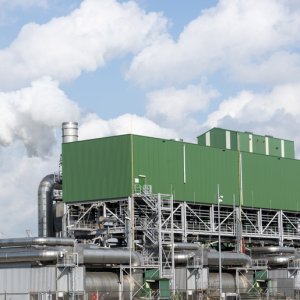
Mexico’s Deepwater: The State of Play
 By Conal Quinn | Journalist & Industry Analyst -
Thu, 09/15/2022 - 09:48
By Conal Quinn | Journalist & Industry Analyst -
Thu, 09/15/2022 - 09:48
For some time now, the Gulf of Mexico has been regarded as one of the great frontiers for oil and gas exploration, with Mexican deepwater in particular viewed as an untapped goldmine. While the American Gulf saw production peak at over 2MMb/d in pre-pandemic 2019, Mexico has failed to produce a single barrel of oil from deepwater plays. In 2004, then president Vicente Fox launched a tirade which gave voice to what can only be described as a national anxiety that Mexico is missing out on a major opportunity when he accused US oil companies of sucking up hydrocarbons from Mexican waters. Almost two decades on and precious little progress has been made. With a production target of 2.5MMb/d set for 2024, the vast resources of Mexican deepwater must be harnessed if any talk of energy sovereignty is to be feasible long-term.
Apart from rapidly increasing production, as the world's most indebted oil company, PEMEX’s primary mandate under the current administration has been debt reduction. Indeed, in recent years the NOC has been subject to cost-cutting measures under the mantra of ‘Republican Austerity’. How exactly, therefore, can PEMEX significantly reduce its debt without sacrificing production? Rystad recently ranked Mexico last among oil-producing countries with fewer than five years of proven reserves. Exploration is therefore imperative, especially with López Obrador effectively ruling out unconventional plays, which make up 57 percent of Mexico’s prospective reserves according to the latest data from CNH due to fracking concerns. Put simply, there is little left to develop from what has already been discovered, either onshore or in the shallow water of the Bay of Campeche. In addition to this, a July 2022 BBVA report raised serious concerns about Mexico’s depleting reserves due to a critical lack of new discoveries while PEMEX’s own annual report indicated that the NOC’s RRR fell from 119.7 percent in 2020 to 105.1 percent in 2021.
As it stands, over half of all of Mexico’s conventional prospective resources are contained in deepwater, making such assets a crucial element for Mexico’s upstream future. Moreover, Mexican deepwater remains largely unexplored in comparison to the US Gulf, since until 2016, cash-strapped PEMEX had been the sole company involved in deepwater exploration. Despite this lack of investment, exploratory drilling thus far in the Perdido Fold Belt corroborates the presence of significant volumes of hydrocarbons of a similar quality to those found on the US side of the maritime border. Unlike Colombia, which has seen plenty of exploration but limited prospective reserves, Mexico has bountiful geological potential.
Mexico’s first real foray into deepwater exploration came during the PAN presidencies of Vicente Fox and Felipe Calderón in the first decade of the 21st century. Despite the billions spent, these first exploration projects produced little results until the 22nd attempt, when PEMEX finally found what it was looking for in Perdido with the 485MMboe Trion oilfield.
When Enrique Peña Nieto became president in 2012, PEMEX was still a long-way off from seeing its deepwater assets ever producing. Peña Nieto thus offered a change of tactic as part of a much broader overhaul of the energy sector that would see PEMEX compete with private operators. Peña Nieto frequently cited Petrobras, specifically the Brazilian NOC’s transformation into a global pioneer in deepwater, as a reference model for public-private business relations.
With his historic opening up of the national oil and gas industry to bidding rounds, Peña Nieto promised to usher in a new era for Mexico’s oil and gas industry. For deepwater in particular, Peña Nieto’s reform attracted international experience, technical expertise and much needed capital injection from some of the world’s largest IOCs as they competed for deepwater blocks in the Perdido Fold Belt and Salina basin. The belief was that the 2013 Energy Reform would give IOCs the confidence to invest in Mexican deepwater, either in partnership with PEMEX or by themselves. Peña Nieto also sought to re-focus PEMEX’s exploration strategy with the exploration success rate of 55 percent far surpassing the international average and deepwater plays constituting a third of all wells drilled during the president’s six-year term, which also saw the inauguration of the state-of-the-art Center for Deepwater Exploration (CTAP).
López Obrador, nevertheless, criticized the vast resources allocated to deepwater by past governments as part of the reason PEMEX found itself in US$106 billion of debt. He has since preferred to bet on tried and tested methods, promising to develop shallow water and onshore projects where PEMEX boasts world-class experience and expertise as part of his attempt to ‘rescue’ the NOC and, with it, state-sovereignty. His efforts have recouped around US$1.15 billion while reducing the average time taken between discovery and development of new fields from five years to one and a half years.
Summarizing the government’s strategy in 2019, inbound Energy Minister Rocío Nahle stated: “We are not going to invest in deepwater because we do not have the money and because we have oil already in shallow water and onshore. We also want to wait for the 27 deepwater contracts already handed out to begin to develop first.” Subsequently, PEMEX has focused on its most immediately profitable and productive assets while slowing down investment in high-risk ventures such as deepwater, as it attempts to climb out of debt and boost solvency. Deepwater fields take at least seven years to reach production and Mexican presidencies only last six. PEMEX needed cash quickly and López Obrador was keen for the results of his so-called ‘fourth transformation’ government to be felt as soon as possible. It would appear this policy is here to stay, with PEMEX´s most recent annual report reading: “We intend to reallocate resources away from deepwater projects, which tend to be expensive and long-term activities, toward shallow water and onshore projects, which have the potential for near-term results.” High-profile assets such as Trion are therefore not expected to enter the production stage until 2025, at the earliest.
Yet, in the context of PEMEX’s star fields such as Ku-Maloob-Zap on the downward spiral, deepwater simply cannot be ignored. Traditionally, the Mexican oil and gas industry has suffered from inefficient political responses to quicker than expected well depletion rates. With its current evasive and contradictory position on deepwater, the current administration seems to be making the same mistakes. With the oil and gas industry enjoying historic superprofits, there is no time like the present to invest in further deepwater exploration. PEMEX has yet to prove itself capable of developing deepwater fields and, as the world’s most indebted oil company, single-handedly embarking on greenfield projects in deepwater can be ruled out, especially considering the NOC saw Fitch downgrade its rating to “junk” in 2019, which could significantly increase borrowing costs. Instead, the most prudent course of action would see high CAPEX projects developed in tandem with third parties who have the necessary experience and expertise in deepwater.
Operators with an established presence in the US Gulf such as Shell should be best-placed to benefit from infrastructure transference and transboundary reservoirs such as those found in Perdido. Despite this, Shell’s Director of Corporate Affairs in Mexico, Lucía Bustamante, has indicated that the IOC would prefer to postpone investment, betting on a more free-market friendly candidate to win 2024 elections. Another major currently active in Mexican deepwater is Malaysian IOC, Petronas, which has amassed some prime real-estate in the Gulf of Mexico under its subsidiary PC Carigali. With 10 exploration blocks (five as an operator and five as a partner) in all three of Mexico’s main deepwater basins across a total area of approximately 22,000km2, Petronas is the second-largest holder by acreage in the country behind PEMEX. Petronas has also benefited from other IOCs such as Equinor pulling out of the market and letting go of its deepwater assets. Finally, another key private player in Mexican deepwater is Murphy who received the greenlight from CNH in Aug 2022 to drill the Tulum-EXP well off the coast of Veracruz, where the American IOC hopes to recover 62.24Mboe of mostly medium crude between 25 and 30 API.
The deepwater sector has faced its fair share of setbacks over the past few years. When the price of a barrel sank below US$30, appetite for high-risk, capital-intensive projects in deepwater dissipated. Just when the sector started showing signs of recovery, the pandemic struck, leading to further disruption, layoffs and some big players pulling out. Nonetheless, a recent Rystad report emphasized that deepwater investment is not just desirable but essential to satisfy the worldwide energy need moving forward. Together with Brazil and Guyana, Rystads expects Mexico to lead the way capital spending in Latin America shifts into ever deeper water.
While López Obrador has been highly critical of what he deems the ‘inefficiencies’ of the private sectors, specifically operators’ delays to reaching production targets, the Mexican president has not ruled out the return of fiscal subsidies to re-incentivize private players to invest in deepwater projects. When PEMEX CEO Octavio Romero revealed at the long-awaited inauguration of the flagship Dos Bocas refinery on July 2 that the NOC had signed a deal worth US $1.5 billion with American company New Fortress Energy in relation to the sub 1000m Lakach project, deepwater hopes were further reignited. The super field, situated off the coast of Veracruz, boasts gas reserves of almost 900Bcf. The project had been suspended for six years when Mexico opted instead to import low-cost gas from the US.
However, Mexico cannot rely on this supply forever, especially if winter weather continues to disrupt supply chains north of the Rio Grande. Added to this is the prospect of the US moving to fill the gap left by embargoes on Russia in Europe. What is certain is that Mexico’s overreliance on natural gas imports has been the elephant in the room and a major oversight in the current administration’s pursuit of energy sovereignty. Another key development remains the 2,500m deep, 485MMboe Trion farmout between PEMEX and operator Woodside. While projected to miss the 2023 production target, Trion is making steady progress with the acquisition of a McDermott-designed floating production unit capable of processing 100Mb/d. CNH expects this project to come online in 2025.















